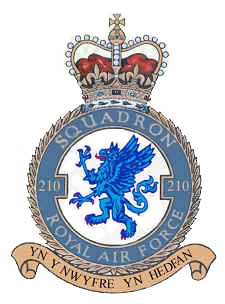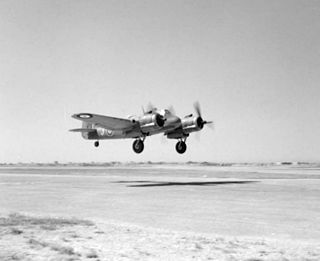
No. 202 Squadron of the Royal Air Force is the maritime and mountains training element of the Defence Helicopter Flying School, operating Airbus Helicopters H145 Jupiter.
No. 119 Squadron RAF was a squadron of the Royal Air Force, flying with RAF Coastal Command during the Second World War. It was the only RAF unit flying the Short G class and Short C class flying boats.

No. 461 Squadron was a Royal Australian Air Force maritime patrol squadron during World War II which operated under Royal Air Force control flying in Europe and over the Atlantic. The squadron was formed in 1942 and was disbanded in mid-1945, just after the end of the war in Europe. Personnel were drawn from many countries of the British Empire, although the majority were Australians. Throughout the war, the squadron was credited with destroying a total of six German U-boats, and operated mainly in the Bay of Biscay and Atlantic.
No. 191 Squadron was a Royal Air Force squadron. During World War I it was a non-operational night training unit, while during World War II it was engaged in maritime reconnaissance.
No. 265 Squadron RAF was an anti-submarine squadron of the Royal Air Force during two world wars. It was based at Gibraltar in World War One and Madagascar in World War Two.

No. 500 Squadron AAF was a Royal Air Force flying squadron. It was initially formed in 1931 as a Special Reserve squadron and in 1936 became part of the Auxiliary Air Force, at this time based at Manston and Detling.
No. 262 Squadron RAF was an anti-submarine patrol squadron of the Royal Air Force between 1942 and 1945.

No. 205 Squadron was a Royal Air Force unit formed on 1 April 1918. Prior to this it had existed as No. 5 Squadron of the Royal Naval Air Service (RNAS). In 1929, it became the first RAF squadron to be permanently based in Singapore, taking as its motto Pertama di Malaya. No. 205 Squadron operated during World War II and the Cold War before disbanding on 31 October 1971.

No. 210 Squadron was a Royal Air Force unit established in World War I. Disbanded and reformed a number of times in the ensuing years, it operated as a fighter squadron during World War I and as a maritime patrol squadron during the Spanish Civil War, World War II and the Cold War before it was last deactivated in 1971.
No. 228 Squadron RAF was a squadron of the Royal Air Force active at various times between 1918 and 1964. It spent the greatest part of its existence flying over water, doing so in First, and Second World Wars and beyond, performing anti-submarine, reconnaissance and air-sea rescue tasks.

No. 235 Squadron RAF was an anti-submarine squadron of the Royal Air Force in World War I and in World War II served as a squadron in RAF Coastal Command.
No. 212 Squadron RAF is an inactive squadron of the British Royal Air Force.
Number 58 Squadron was a squadron of the Royal Air Force.

Number 209 Squadron of the British Royal Air Force was originally formed from a nucleus of "Naval Eight" on 1 February 1917 at Saint-Pol-sur-Mer, France, as No. 9 Squadron Royal Naval Air Service (RNAS) and saw active service in both World Wars, the Korean War and in Malaya. The use of the squadron number ceased in 1968 and it has not been reused since by an RAF squadron. However the number, badge and motto is in current service within the RAF Air Cadets at 209 Squadron ATC in Nottinghamshire.

No. 270 Squadron RAF was a Royal Air Force squadron that operated both in the First and Second World Wars mainly as an anti-shipping and anti-submarine squadron.
No. 232 Squadron of the Royal Air Force was active in both World War I and World War II in a variety of roles, having seen action as an anti-submarine patrol, fighter and transport squadron.
No. 86 Squadron RAF was a unit of the Royal Air Force during World War II. Attached to Coastal Command the unit flew reconnaissance and air-sea rescue missions, anti-shipping strikes, and anti-submarine patrols.
No. 222 Group was a group of the Royal Air Force during the Second World War. Formed on 1 September 1941, based at Ceylon. Squadrons were stationed around the Indian Ocean. The group undertook long-range bombing and mine-laying operations that took them as far afield as Sumatra and Singapore.
No. 240 Squadron RAF was a Royal Air Force flying boat and seaplane squadron during World War I, World War II and up to 1959. It was then reformed as a strategic missile squadron, serving thus till 1963.
No. 244 Squadron RAF was a Royal Air Force Squadron formed as an anti–submarine unit in World War I and a bomber and anti-submarine unit in the Middle East in World War II.








